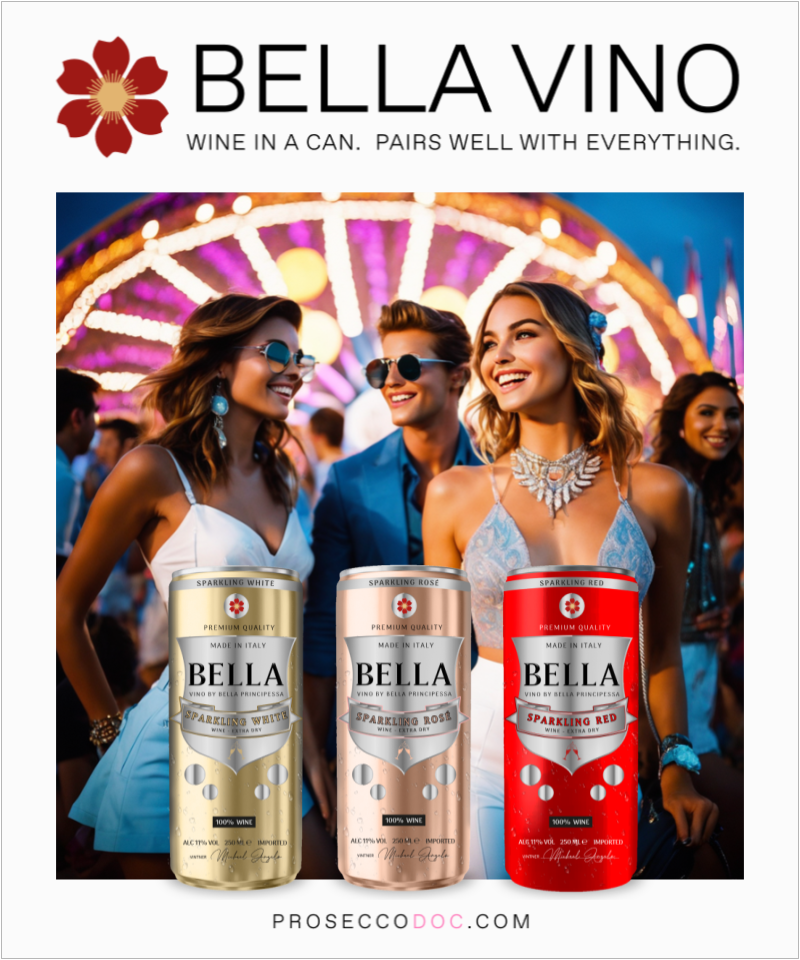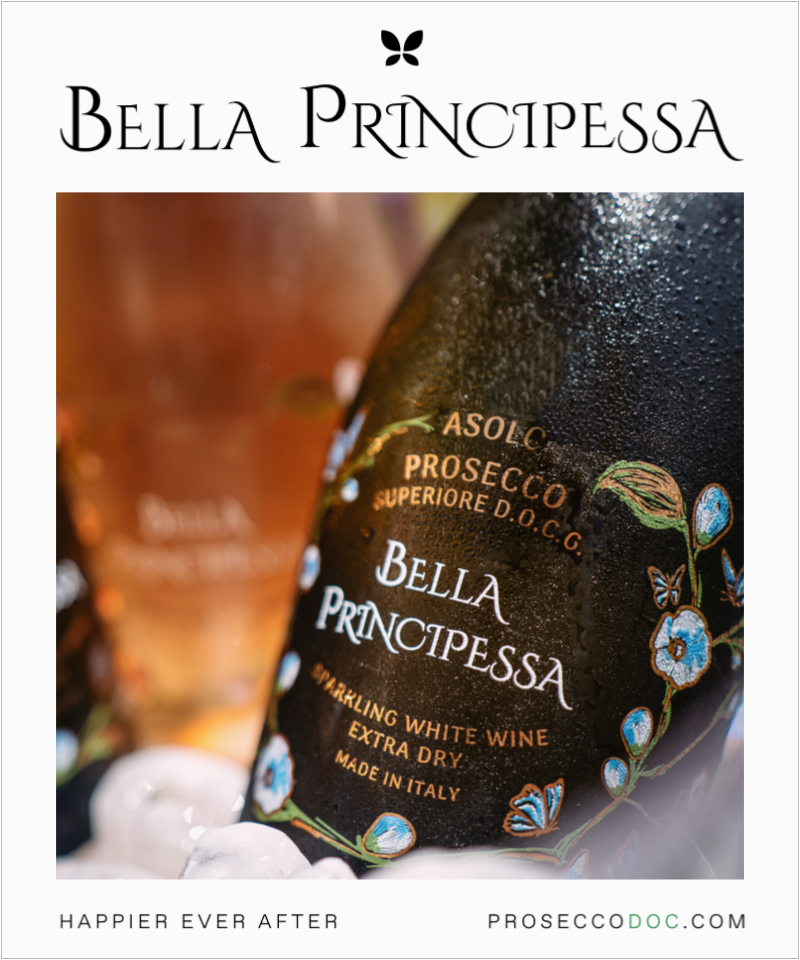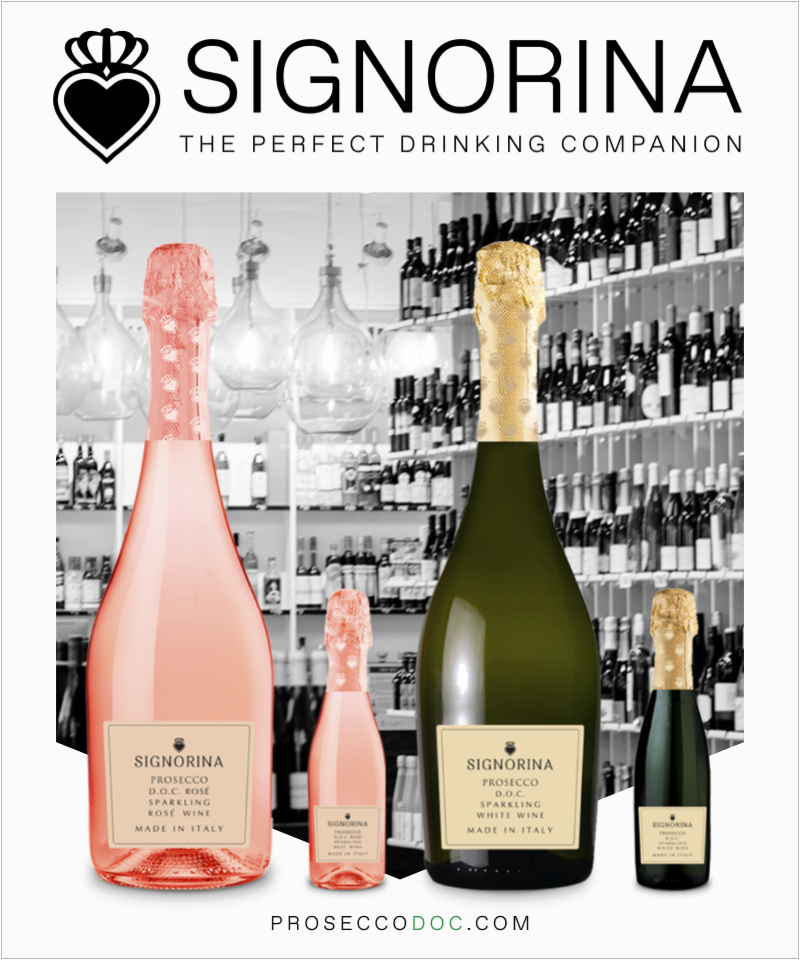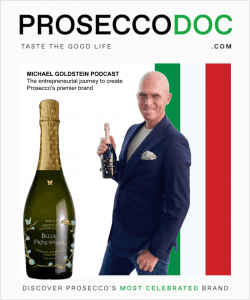In 2024, the world of sparkling wines continues to enchant us with the ever-popular “prosecco champagne” duo, embodying elegance and celebration. This guide explores everything from the basics of Prosecco to its nuanced comparison with Champagne, offering a comprehensive understanding of these beloved beverages.
Table of contents
- Prosecco Unveiled: Italy’s Sparkling Pride
- The Art of Prosecco Pronunciation
- Prosecco’s Birthplace: A Region of Riches
- Bella Principessa Prosecco: An affordable, prestigious alternative to Champagne
- Decoding Prosecco’s Bubbles and Taste
- Prosecco vs. Champagne: Appellations and Differences
- So, What is Prosecco?
- So, What is Champagne?
- Prosecco DOC and Superiore DOCG: Defining Excellence
- The Charm of Cartizze: Prosecco’s Luxurious Expression
- Modern Trends: The Rise of Canned Sparkling Wines
- What is Cava, and How is it Different from Prosecco and Champagne?
- Prosecco and Champagne: A Tale of Two Production Methods
- Calories, Serving, and Storage: Enjoying Prosecco Champagne Responsibly
- Conclusion: Toasting to the Splendor of Prosecco Champagne
- Frequently Asked Questions
- Is Prosecco the same as Champagne?
- Is Prosecco a dry or sweet wine?
- What is so special about Prosecco?
- What type of alcohol is Prosecco?
- Is Prosecco Champagne?
- What Grapes Are Used in Prosecco?
- Where is Prosecco Produced?
- How Is Prosecco Made?
- How is Champagne Made?
- How to Serve Prosecco
- How to Pair Prosecco Sparkling Wines
- What About Prosecco in a Can and From a Tap?
- What Does Prosecco Taste Like?
- How Long Does Prosecco Wine Last?
- What Are the Best Prosecco Brands?
Prosecco Unveiled: Italy’s Sparkling Pride
A key player in the “prosecco champagne” discussion, Prosecco hails from Italy and has seen a meteoric rise in popularity. This section answers essential questions about Prosecco, including its origins, production, and how it stands compared to sparkling wines like Champagne and Cava.
The Art of Prosecco Pronunciation
Understanding “prosecco champagne” involves correctly pronouncing Prosecco – “pruh-seh-kow.” Recognized as an affordable alternative to Champagne, Prosecco is much more than a budget-friendly option; it represents Italian winemaking heritage.
Prosecco’s Birthplace: A Region of Riches
The origin plays a crucial role in the “prosecco champagne” narrative. Prosecco is intricately linked to its production region in Northern Italy, encompassing the Veneto and Friuli regions. This area’s unique geography and climate contribute significantly to Prosecco’s distinctive qualities.
Bella Principessa Prosecco: An affordable, prestigious alternative to Champagne
In the world of “prosecco champagne,” Bella Principessa emerges as a celebrated brand renowned for its exceptional Prosecco. Its sparkling wines capture the essence of the Glera grape, offering a luxurious experience that rivals Champagne’s sophistication.
Decoding Prosecco’s Bubbles and Taste
When discussing “prosecco champagne,” the effervescence of Prosecco is a crucial talking point. This section delves into the factors contributing to Prosecco’s delightful bubbles, from the Charmat method to the unique properties of the Glera grape.
Prosecco vs. Champagne: Appellations and Differences
A pivotal aspect of the “prosecco champagne” comparison is understanding the differences between these two sparkling wines. This includes exploring the distinct wine appellations, the flavor profiles of each, and the production methods that set them apart.
So, What is Prosecco?
Prosecco is a sparkling wine from the Veneto and Friuli Venezia Giulia regions of northeastern Italy. Renowned for its light, frothy bubbles, Prosecco is primarily made from Glera grapes, although it can include up to 15% of other varieties.
Characterized by its bright, fruity flavors and aromatic bouquet, Prosecco often exhibits notes of green apple, pear, melon, and peach, making it a refreshing choice for any occasion. Prosecco’s effervescence is achieved through the Charmat method, where secondary fermentation occurs in large steel tanks, contributing to its approachability and affordability. It’s a versatile wine, enjoyed on its own or as a key ingredient in popular cocktails like Bellinis. Whether it’s a casual gathering or a formal celebration, Prosecco adds a touch of Italian elegance.
So, What is Champagne?
Champagne, a symbol of luxury and celebration, is a sparkling wine from the Champagne region in northeastern France. This esteemed beverage primarily uses Chardonnay, Pinot Noir, and Pinot Meunier grapes. What sets Champagne apart is its meticulous production process known as the traditional method or Méthode Champenoise.
This involves secondary fermentation in the bottle, aging on yeast lees, and a process called remuage, enhancing its complexity, depth, and distinctive toasty or yeasty flavors. The result is a sparkling wine that ranges from dry to sweet, with a refined effervescence and notes of almond, citrus, and brioche.
Champagne’s prestigious reputation is underpinned by strict appellation controls and a centuries-long heritage, making it a coveted choice for significant celebrations and discerning palates.
Prosecco DOC and Superiore DOCG: Defining Excellence
In the realm of “prosecco champagne,” the classifications of Prosecco – DOC and Superiore DOCG – highlight the quality and prestige of this Italian sparkling wine. This section examines what each designation entails and how they influence Prosecco’s standing in the global wine market.
The Charm of Cartizze: Prosecco’s Luxurious Expression
Within the “prosecco champagne” spectrum, Cartizze represents the pinnacle of Prosecco’s luxury. Grown in a specific, highly-valued region, Cartizze Prosecco is known for its exquisite flavor and rarity, making it a sought-after choice for connoisseurs.
Modern Trends: The Rise of Canned Sparkling Wines
Adapting to contemporary preferences in the “prosecco champagne” scene, the trend of canned sparkling wines is rising. While these cannot be officially labeled as Prosecco due to regulatory constraints, they offer a convenient way to enjoy similar flavors, especially for those who appreciate the portability and accessibility of canned beverages.

What is Cava, and How is it Different from Prosecco and Champagne?
Cava, Spain’s sparkling gem from Catalonia, stands out with its distinct production and flavor. Crafted traditionally, like Champagne, Cava undergoes secondary fermentation in the bottle, enriching it with complex flavors and refined bubbles. Cava contrasts with Italy’s Prosecco, produced using the Charmat method with Glera grapes.
Cava’s flavor, infused with native grapes like Macabeo, Parellada, and Xarel·lo, strikes a balance between Prosecco’s fruitiness and Champagne’s yeasty notes, offering a drier taste with hints of citrus and green apple. Each of these sparkling wines, effervescent and celebratory, uniquely embodies its regional legacy and winemaking tradition.
Prosecco and Champagne: A Tale of Two Production Methods
A critical comparison in the “prosecco champagne” dialogue involves examining their production methods. The Martinotti or Charmat method used for Prosecco contrasts with the traditional Méthode Champenoise for Champagne, each contributing to these sparkling wines’ distinct character and flavor profiles.
Calories, Serving, and Storage: Enjoying Prosecco Champagne Responsibly
In “prosecco champagne,” knowing how to enjoy these sparkling wines best is crucial. This includes understanding the calorie content of Prosecco, the ideal serving temperature, and the best practices for storing these wines to preserve their quality and flavor.
Conclusion: Toasting to the Splendor of Prosecco Champagne
As we explore the diverse and rich world of “prosecco champagne,” it’s clear that both Prosecco and Champagne hold a special place in the hearts of wine enthusiasts. Whether it’s the light and refreshing Prosecco or the deep and complex Champagne, each offers a unique experience, making every sip a celebration of the finest sparkling wines.

Frequently Asked Questions
Is Prosecco the same as Champagne?
No, Prosecco and Champagne are not the same. They differ in their origin, grape types, production methods, and taste profiles, making each unique in its own right.
Is Prosecco a dry or sweet wine?
Prosecco ranges from dry to sweet. The sweetness level varies from Brut (very dry) to Extra Dry (slightly sweet) to Dry (sweetest), catering to different palates.
What is so special about Prosecco?
Prosecco stands out for its light, fruity flavor and refreshing effervescence. Its versatility and affordability make it a popular choice for various occasions.
What type of alcohol is Prosecco?
Prosecco is a sparkling wine with an alcohol content typically between 11% and 13%. Its light and bubbly nature makes it a favorite for celebrations and casual sipping.
Is Prosecco Champagne?
No, Prosecco isn’t Champagne. While both are sparkling wines, Prosecco comes from Italy and Champagne from France. Their production methods, grape varieties, and taste profiles are distinct.
What Grapes Are Used in Prosecco?
Prosecco is primarily made from Glera grapes. These grapes give Prosecco its signature fresh and fruity flavor. Up to 15% of other varieties may be included, adding complexity to the wine.
Where is Prosecco Produced?
Prosecco is produced in northeastern Italy’s Veneto and Friuli Venezia Giulia regions. These regions are renowned for their ideal winemaking conditions, contributing to Prosecco’s unique character.
How Is Prosecco Made?
Prosecco production uses the Charmat method, where secondary fermentation occurs in steel tanks. This efficient method helps retain the fresh, fruity flavors of the Glera grapes.
How is Champagne Made?
Champagne undergoes secondary fermentation in the bottle, known as the traditional method. This process includes aging on lees, adding to its complexity and distinctive flavors like toast and brioche.
How to Serve Prosecco
Serve Prosecco chilled, between 6-8°C, in a tulip-shaped glass. This temperature and glassware help enhance Prosecco’s aromas and flavors for an optimal tasting experience.
How to Pair Prosecco Sparkling Wines
Prosecco pairs well with a variety of dishes. Its light, fruity profile complements seafood, light pasta, and appetizers. It’s also perfect with spicy Asian dishes, balancing the heat with refreshing bubbles.
What About Prosecco in a Can and From a Tap?
While Prosecco traditionally comes in glass bottles, there’s a growing trend of canned sparkling wines. These can’t be labeled Prosecco due to regulations, but they offer a similar taste experience. Prosecco from a tap is also available, offering a convenient option for casual enjoyment.
What Does Prosecco Taste Like?
Prosecco is known for its light, fruity, and floral flavors. Expect notes of green apple, pear, melon, and sometimes peach. Its effervescence adds to the fresh and crisp taste, making it a delightful drink.
How Long Does Prosecco Wine Last?
Once opened, Prosecco should be consumed within 1-2 days to enjoy its best quality. Unopened, it’s best consumed within a year of purchase to appreciate its freshness and lively bubbles.
What Are the Best Prosecco Brands?
Bella Principessa and Signorina, available at Prosecco.com, are among the best Prosecco brands. Known for their quality and exquisite taste, these brands offer a premium Prosecco experience.











